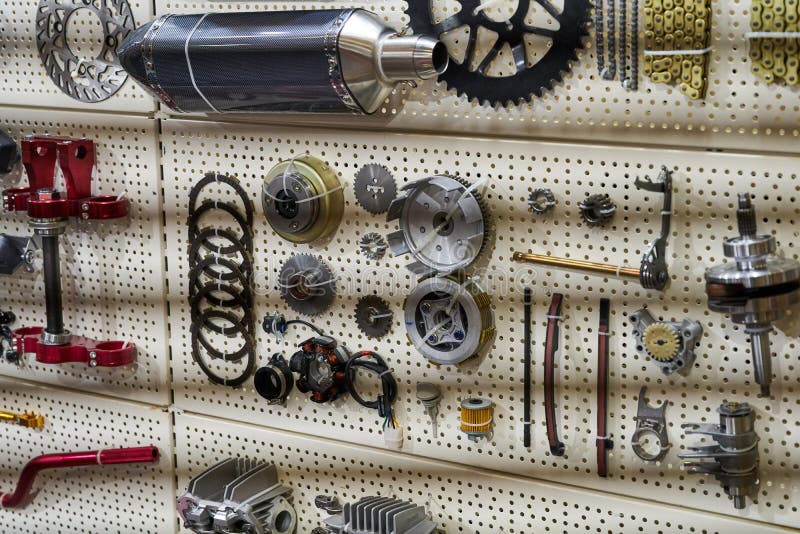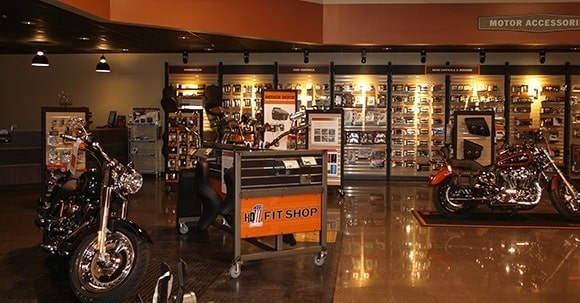Your Best Motorbike Shop for Quality Parts and Accessories
Your Best Motorbike Shop for Quality Parts and Accessories
Blog Article
Comprehending the Crucial Parts of a Motorcycle: A Comprehensive Guide for Enthusiasts
For bike enthusiasts looking to raise their riding experience and guarantee their bikes run smoothly, recognizing the essential parts of a bike is critical. Each element, from the engine's complex workings to the critical role of the braking devices, not just impacts efficiency but additionally safety and comfort.
Engine Parts

The camshaft plays an important function in controlling the timing of the engine's valves, guaranteeing the specific opening and closing essential for efficient gas and air consumption, along with exhaust expulsion. This timing is essential to keeping optimum engine performance and efficiency. Furthermore, the carburetor or gas shot system, depending on the motorbike version, is in charge of mixing air with fuel in the correct ratio for combustion.
The cooling system, either air or liquid-based, works to keep the engine's temperature within operational restrictions, stopping getting too hot and making certain durability - motocross gear nz. Each part, diligently created and incorporated, adds to the seamless operation of the engine, specifying the motorbike's power result and general performance
Transmission System
Indispensable to the motorbike's performance, the transmission system ensures reliable power transfer from the engine to the wheels. This system makes up several important components, including the clutch, gearbox, and last drive, each playing an essential function in equating the engine's power into activity. The clutch, typically operated by a hand lever, serves to disengage the engine and engage from the transmission, enabling smooth gear changes and controlled acceleration.
The gearbox, often described as the transmission appropriate, has a set of equipments that bikers can manually move with to adjust the bike's rate and torque outcome. These equipments are arranged in a series that enables the motorcycle to speed up efficiently and maintain optimum engine efficiency throughout different speeds. The majority of bikes make use of a sequential transmission, needing the motorcyclist to change equipments in an established order.
Braking Systems
While understanding the transmission system is key to taking advantage of a motorbike's power, equally vital is the ability to regulate and stop that power effectively, which is where braking mechanisms enter play. Brakes are vital for safety and efficiency, giving the biker with the required control to navigate various surfaces and conditions. Normally, motorbikes include two kinds of braking systems: disc brakes and drum brakes.
Disc brakes are extra widespread in contemporary bikes due to their remarkable performance. They contain a brake disc, caliper, and pads. When turned on, the caliper presses the brake pads versus the rotating disc, converting kinetic energy into heat, consequently slowing the wheel. This system offers far better warm dissipation, constant efficiency, and enhanced stopping power, particularly in wet problems.
Alternatively, drum brakes, though much less usual, are still found in some bikes. They function by pushing brake footwear versus the internal surface area of a drum affixed to the wheel. While typically much less efficient in warmth dissipation and quiting power, drum brakes are less complex and extra cost-effective.
Recognizing these stopping systems' subtleties enables riders to maintain their bikes appropriately and value the design that guarantees risk-free and effective stopping.
Suspension and Guiding
Suspension and guiding systems are vital parts that dramatically affect a motorcycle's handling and ride comfort. The shock absorber, containing forks at the front and shock absorbers at the rear, takes in roadway abnormalities, boosting stability and control. Front forks, normally telescopic or inverted, compress and rebound to mitigate effects, while rear shock absorbers preserve tire contact with the road, crucial for grip and security.
Steering, focused around the handlebars, attaches the cyclist to the motorcycle's directional control. The steering head bearings make certain smooth procedure, permitting exact maneuverability. Appropriate placement and maintenance of these bearings are crucial for predictable steering reaction and motocross helmet with goggles reducing biker tiredness.
The suspension's adjustability is one more crucial facet; preload, damping, and rebound setups permit customization to match various riding conditions and designs. This flexibility is crucial for optimizing efficiency, whether browsing city streets or dealing with sturdy trails. Technologies like digital shock absorber use real-time adjustments, boosting trip top quality across varied surfaces.

Electric Solutions
After making sure a smooth and controlled adventure via efficient suspension and steering systems, interest turns to the electric systems, a crucial facet of modern bikes. These systems play an essential role not only in starting the engine yet also in powering different parts that boost the performance and safety of the motorcycle.
At the heart of a motorcycle's electrical system is the battery, which shops electric energy required for beginning the engine and powering complementary systems - motorcycle shop. The generator or generator, paired with the rectifier-regulator, guarantees the battery continues to be billed while the motorbike functions, transforming mechanical power into electrical power and keeping voltage degrees
The ignition system, an additional critical element, is accountable for sparking the air-fuel blend in the engine's cyndrical tubes. Modern motorbikes commonly make use of most expensive helmet a digital ignition system, providing greater effectiveness and reliability compared to traditional systems.
Illumination systems, including fronts lights, tail lights, and indicators, are likewise essential, guaranteeing exposure and security for the cyclist. Added digital elements such as sensors, control systems, and displays add to advanced functions like fuel shot management, anti-lock braking systems (ABDOMINAL MUSCLE), and electronic dashboards, even Learn More more enhancing the riding experience.
Verdict
A detailed understanding of a bike's important elements, including the engine, transmission system, stopping devices, suspension, steering, and electric systems, is vital for lovers aiming to maximize safety and security, convenience, and performance. Proficiency of these aspects enables for notified choices regarding maintenance and upgrades, ultimately enhancing the riding experience. By incorporating this understanding, riders can ensure their bikes run at peak performance and dependability, thus optimizing both satisfaction and durability of their cars.
For motorcycle fanatics looking to raise their riding experience and ensure their bikes run efficiently, comprehending the crucial components of a motorcycle is extremely important.Important to the motorbike's performance, the transmission system guarantees efficient power transfer from the engine to the wheels.While recognizing the transmission system is key to taking advantage of a bike's power, similarly crucial is the ability to control and stop that power efficiently, which is where braking devices come right into play. Usually, motorbikes include 2 types of stopping systems: disc brakes and drum brakes.
A thorough comprehension of a motorbike's crucial elements, consisting of the engine, transmission system, braking mechanisms, suspension, steering, and electrical systems, is important for enthusiasts intending to enhance safety and security, efficiency, and convenience.
Report this page